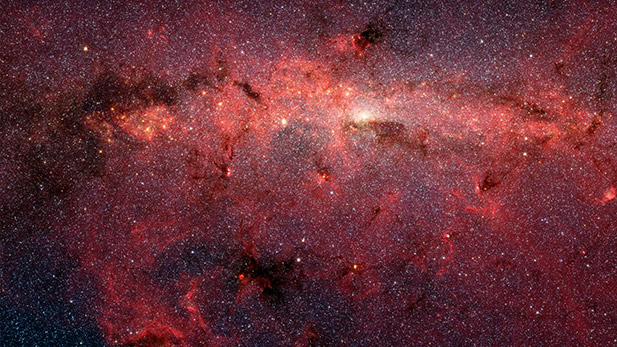 This dazzling infrared image from NASA's Spitzer Space Telescope shows hundreds of thousands of stars crowded into the swirling core of our spiral Milky Way galaxy. In visible-light pictures, this region cannot be seen at all because dust lying between Earth and the galactic center blocks our view.
This dazzling infrared image from NASA's Spitzer Space Telescope shows hundreds of thousands of stars crowded into the swirling core of our spiral Milky Way galaxy. In visible-light pictures, this region cannot be seen at all because dust lying between Earth and the galactic center blocks our view.NASA has selected the UA-led GUSTO mission which will send a balloon to near space to study the Milky Way galaxy. Christopher Walker is the mission's principal investigator and says "GUSTO will provide the first complete study of all the phases of the stellar life cycle, from molecular clouds, through star birth and evolution." Scheduled for launch on December 15th, 2021, the high altitude balloon will silently rise into the cold, dry air above Antarctica with an airborne observatory in tow. GUSTO's science payload consists of a 1-meter telescope and various instruments mounted to a platform known as the gondola. The payload weighs close to 2 tons and will circle Antarctica at an elevation of between 110,000 and 120,000 feet or about 17 miles above a typical airliner's cruising altitude.
In this Episode
Christopher Walker, Professor of Astronomy and GUSTO's Principal Investigator
Tim Swindle, Ph.D., Director and Department Head of the UA's Lunar and Planetary Lab

By submitting your comments, you hereby give AZPM the right to post your comments and potentially use them in any other form of media operated by this institution.